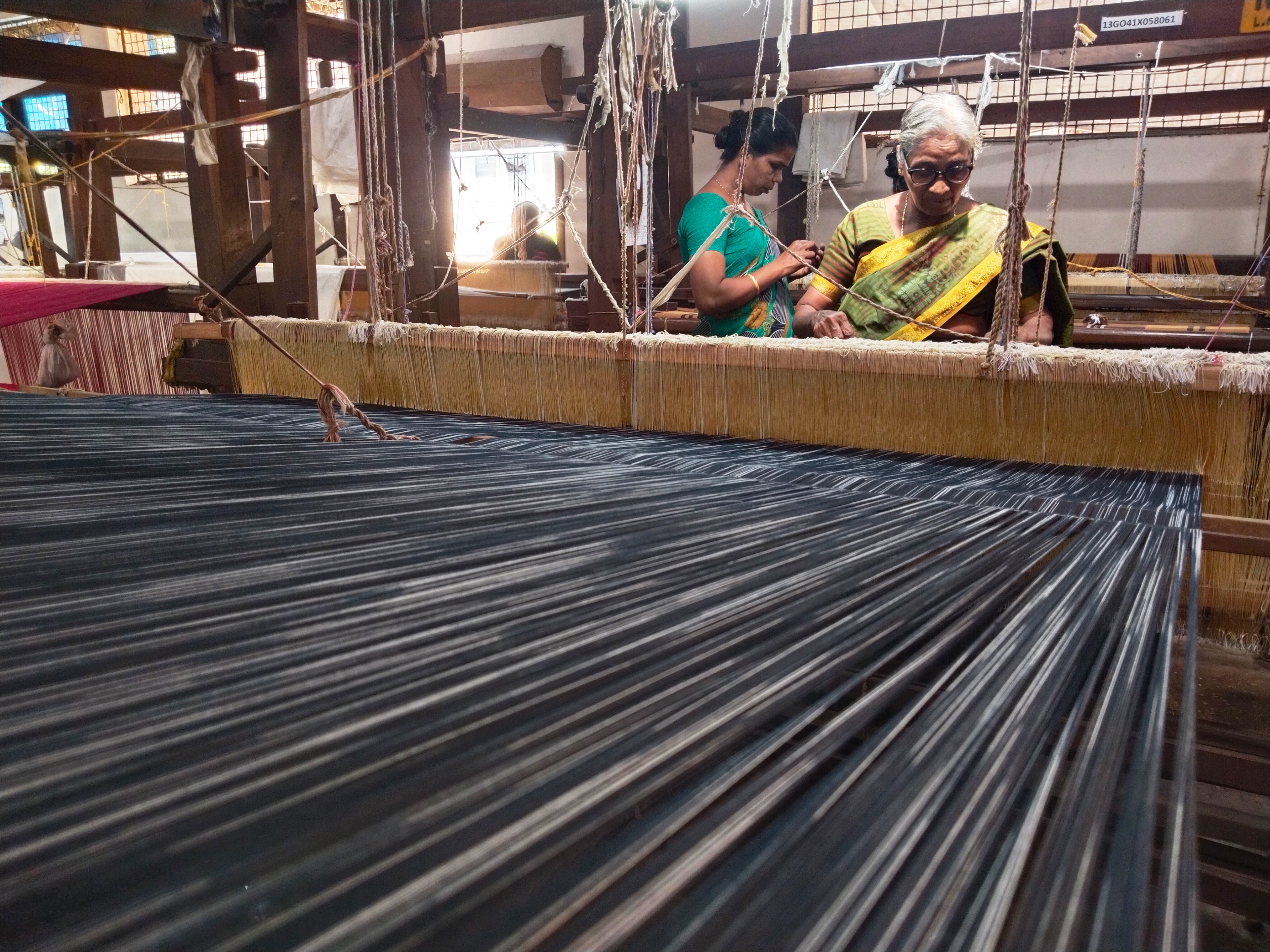

Design strategy to connect Kannur handloom to existing online channels.
The project attempts to devise strategies to introduce handloom products from Kannur to existing online channels for handloom and handicrafts in India, which would benefit the handloom clusters.
INTRODUCTION
The research focused on Kannur handloom cooperatives and handloom e-commerce platforms, aiming to explore new opportunities for these cooperatives in the digital marketplace. A holistic understanding of available online channels for handlooms and the dynamics of Kannur's handloom cooperatives was essential. The study adopted the IDEO design thinking approach to ensure a structured and user-centered process.
The research focused on Kannur handloom cooperatives and handloom e-commerce platforms, aiming to explore new opportunities for these cooperatives in the digital marketplace. A holistic understanding of available online channels for handlooms and the dynamics of Kannur's handloom cooperatives was essential. The study adopted the IDEO design thinking approach to ensure a structured and user-centered process.
The research's scope was to create opportunities for cooperatives to tap into e-commerce platforms, enhancing market reach and introducing Indian crafts to online consumers. However, the study acknowledged limitations, such as the lack of direct control over onboarding products onto these platforms. The process requires iterative testing and further research to achieve long-term results.
Problem Statement
Kannur handlooms, even after receiving the GI Tag in 2009, it is hard to find products from them on the existing online platforms of handloom and handicrafts.
Kannur handlooms, even after receiving the GI Tag in 2009, it is hard to find products from them on the existing online platforms of handloom and handicrafts.
Aim
The project attempts to devise strategies to introduce handloom products from Kannur to the existing online channels for handlooms and handicrafts in India, which would benefit the handloom clusters.
The project attempts to devise strategies to introduce handloom products from Kannur to the existing online channels for handlooms and handicrafts in India, which would benefit the handloom clusters.
FINDINGS & ANALYSIS
The project aimed to analyze data gathered from cooperatives using system mapping, SWOT analysis, PESTEL analysis, and Porter’s Five Forces to gain a comprehensive understanding of the factors influencing the craft sector. The findings revealed a decline in orders, with cooperatives struggling to retain existing clients.
Data was collected from five cooperatives with varying production capacities, providing insights into their operational scale, artisan workforce, product offerings, and distribution channels. This analysis facilitated a deeper understanding of the challenges and opportunities within the sector.

An analysis of the challenges faced by handloom cooperatives and existing online platforms was conducted. Using system mapping, SWOT analysis, PESTEL analysis, and Porter’s Five Forces model, the study aimed to identify the underlying issues while assessing the strengths and weaknesses of the cooperatives.
Additionally, the evaluation of online platforms provided insights into the positioning of organizations, their distribution systems, and their product offerings, contributing to a comprehensive understanding of the market landscape.

IMPLEMENTATION
Online marketplaces were identified based on the specific needs of the cooperative, ensuring seamless integration into their existing system. As a result, the Irinav Handloom Cooperative was successfully onboarded with two such organizations, Blessdbuy and 200 Million Artisans. The catalogue was shared with Bessdbuy and the photoshoot was posted in the page of 200 Million Artisans page as part of their initiative, which promotes different crafts of Indian, through which Kannur handlooms would reach a wider audience.
Additionally, a product photoshoot was conducted featuring the cooperative's offerings, leading to the creation of a comprehensive catalog that showcased their diverse product range. The photographer was Ananaya Manoj, and the visual designer who created the catalogue layout based on the need was Rini Robert. This initiative aimed to enhance their market visibility and expand their reach to potential customers.
The project was awarded the best post-graduation project, M.des 2023.
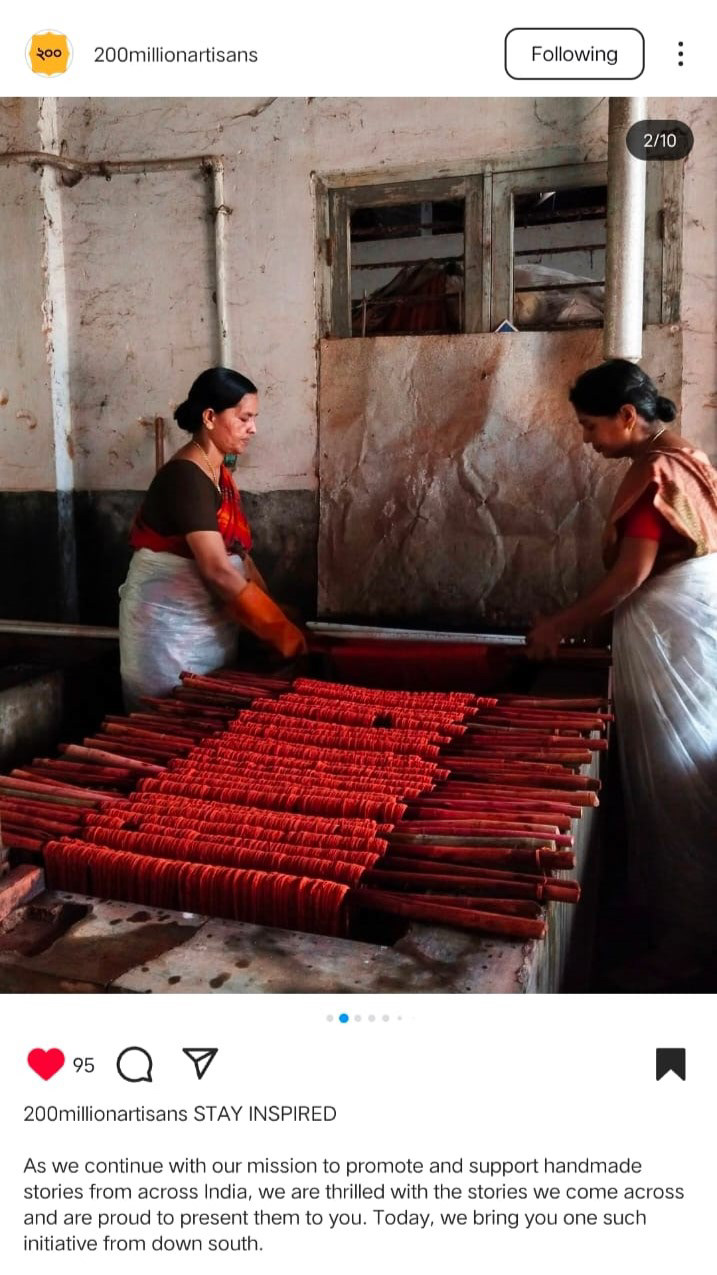
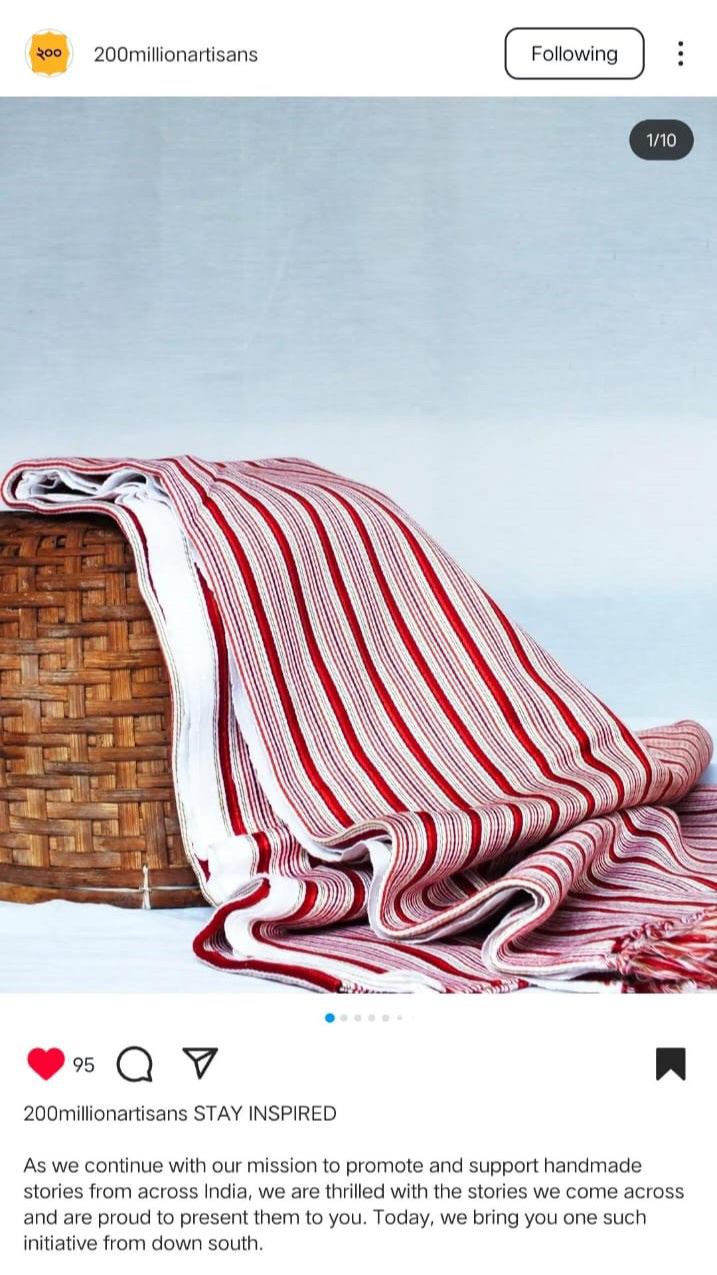




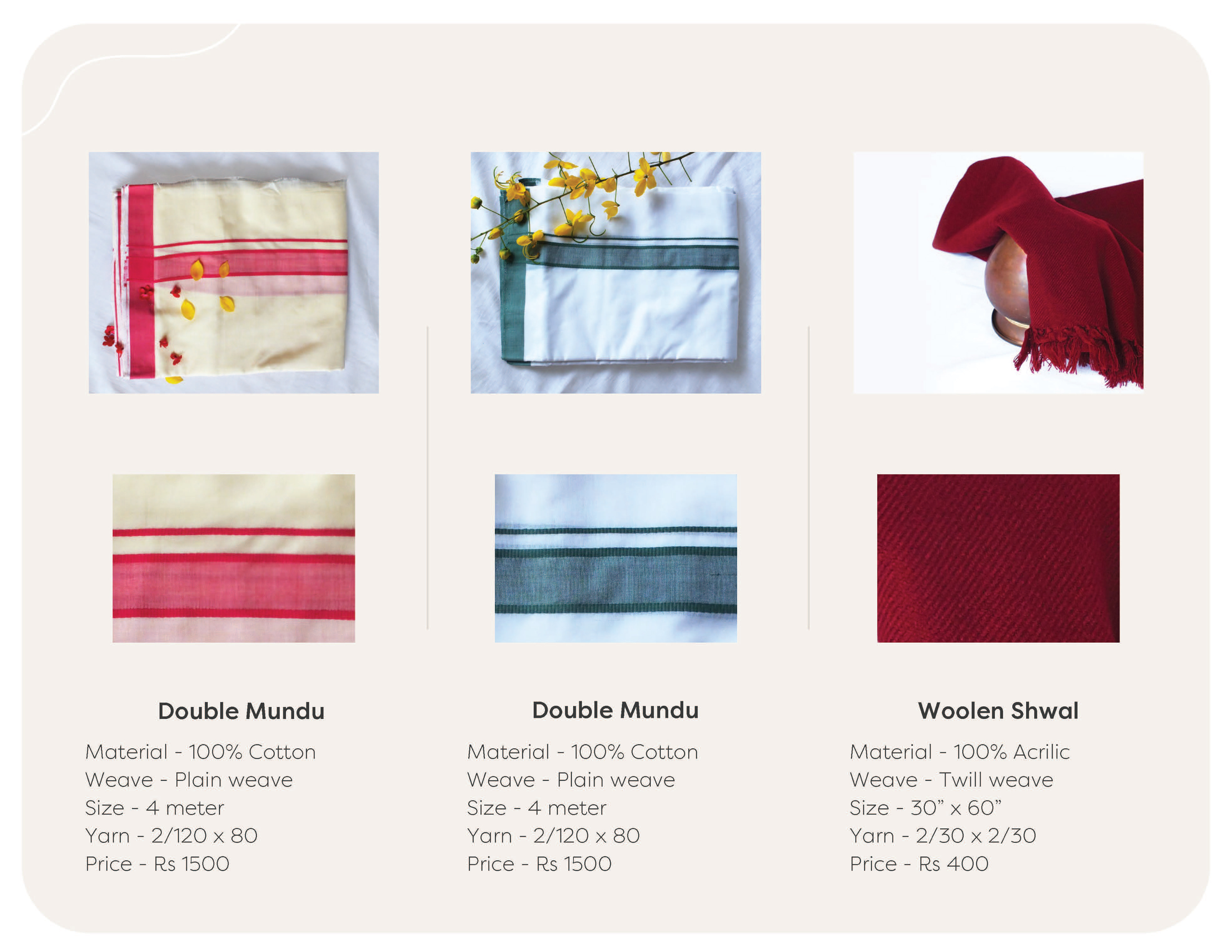

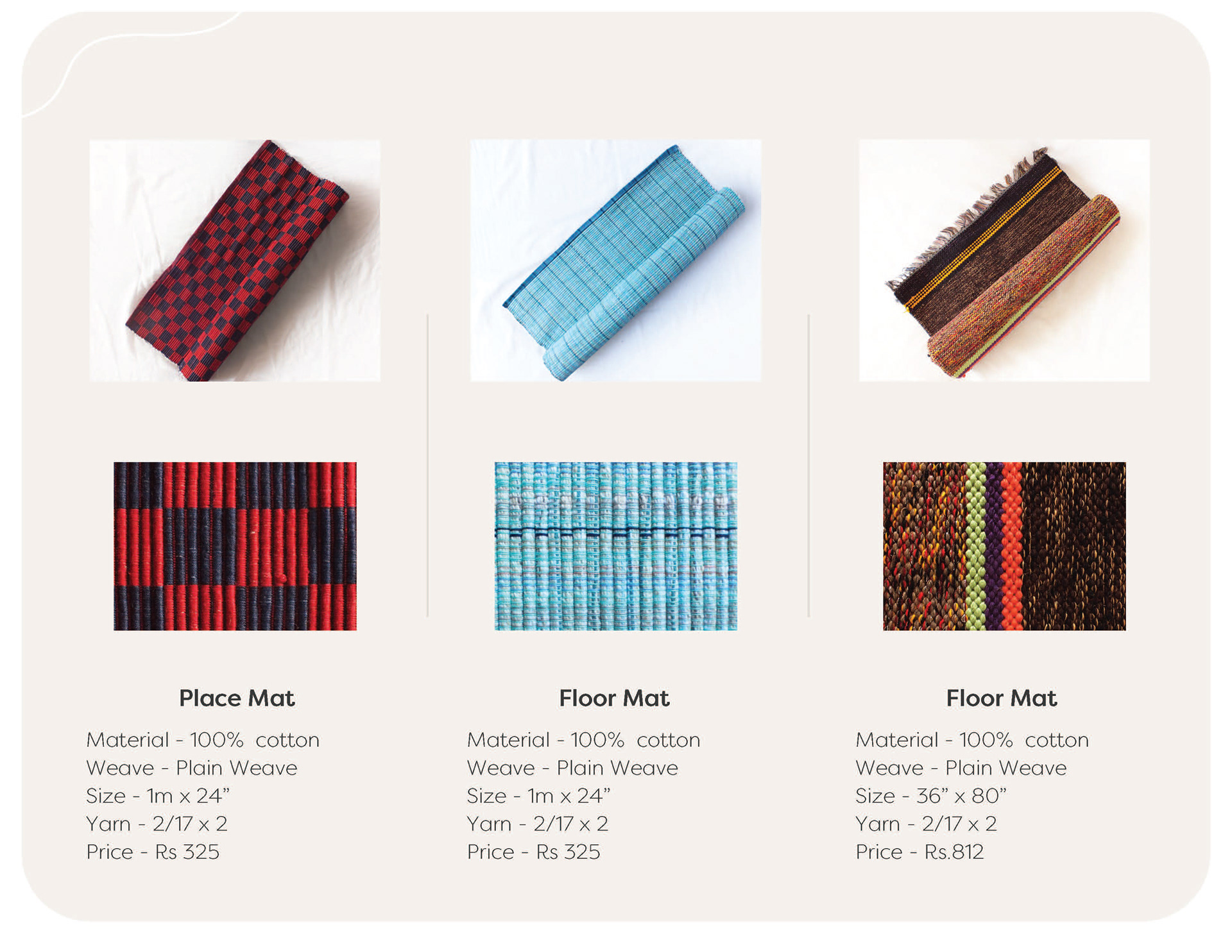
Browse Portfolio:


